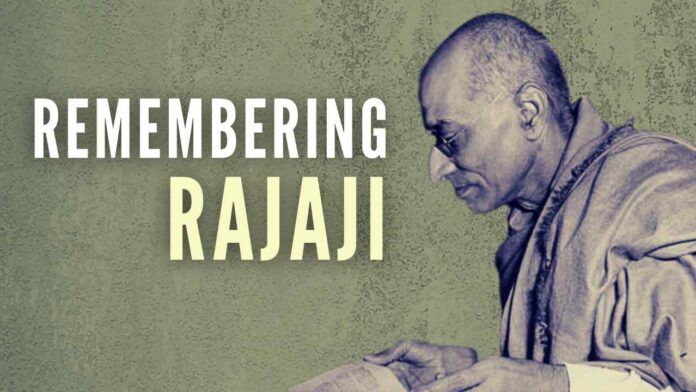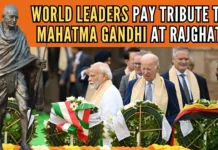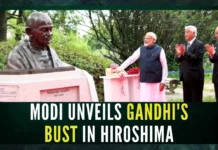
Rajaji – India’s conscience-keeper
The birthday of Chakravarty Rajagopalachari (Rajaji) on 9th December 2021, has gone unnoticed for all practical purposes in India and even in his own state of Tamil Nadu. This is in sharp contrast to the way that India celebrates the birth anniversary of eminent persons like Mahatma Gandhi, Jawaharlal Nehru, Sardar Vallabhai Patel. This is also in sharp contrast to the way in which Tamil Nadu celebrates the birth anniversary of eminent persons like Periyar, Annadurai, Kamaraj, Bharathiar, V O Chidambaram Pillai. The above persons are all eminent personalities and it is appropriate that India remember them, Rajaji is no less an eminent person than the above stalwarts. Rajaji was described as his conscience keeper by Mahatma Gandhi.
Unique role in post-independent India
While Rajaji’s public life can be divided into two parts namely pre-independent India and post-independent India, the younger generation who have not seen Rajaji and only read his life history must be wondering as to which part of his public life was more noteworthy, whether pre-independent days (before the year 1947) or post-independent days (after the year 1947)
In the pre-independent days, there was galaxy of great leaders and personalities crisscrossing across India under the leadership of Mahatma Gandhi and Rajaji was one amongst them. However, in the post-independent days, the role and contribution of Rajaji were unique, as he spoke about several socio-economic subjects with a high level of clarity and understanding and courage of conviction, even when they would be different from the popular perspectives prevailing then. There were many such views and concepts that formed part of his speeches and writings.
Advocacy of free enterprise
One of the important policies that Rajaji recommended and advocated was about the need for promoting free enterprise that would enable rapid industrial and economic growth in the country. These views were different from that of state capitalism that the then Prime Minister Jawaharlal Nehru advocated and practiced.
At that time, Rajaji was severely criticized by the so-called socialists, leftists, and communists who castigated him for what they termed as taking the side of affluent and rich people and businessmen. According to his critics, the investment for growth has to be necessarily, fully or mostly with the government, to ensure ploughing of national resources and investments in the most appropriate areas that were relevant to the need of the country. According to them, such state capitalism was necessary to achieve equi distribution of income and opportunities and to prevent exploitation of deprived persons by the rich and affluent people. These critics of Rajaji including Jawaharlal Nehru had a strong faith in the public sector enterprises, somewhat as reflected largely by the Soviet form of governance in those days. Such advocates of state capitalism took care to make a distinction between communism and socialism.
In other words, the advocates of state capitalism were striving to implement the communist philosophy in a democratic society. Initially, this experiment caught the imagination of the countrymen. Massive projects like steel plants, power plants were set up under the public sector and later on, the then Prime Minister Indira Gandhi went to the extent of nationalizing the banks. Such steps appeared to take the country ahead when viewed from a short-term perspective. However, after the initial euphoria, they, later on, proved to be counterproductive in the long run, as inefficiency, political interference, and other negative elements crept into the management of these public sector institutions in a big way and retarded their progress. They proved to be counterproductive in the long run, as several public sector enterprises became sick and white elephants and governments had to pump money continuously into them to sustain their operations. While there are many such examples, Air India is an example in recent memory.
The collapse of communism in the Soviet Union
To cut the long story short, the inadequacy of the Nehruvian policy of state capitalism has been more than proven by the collapse of the Soviet government and the virtual elimination of communism from the erstwhile Soviet Union.
Dilution of communism in China
Now, the other big communist country China has considerably diluted the concept of state capitalism by encouraging private ownership in a big way and allowing multinational companies to play a big role in China’s industrial and economic sphere. This policy of the Chinese government is predominantly responsible for leapfrogging the Chinese economy and China to a position of world leadership. Today, the Chinese form of governance is only communism in namesake and all observers agree that China is at least, in part, a free enterprise economy. As a matter of fact, by conceding that China is a democratic society, (whatever it may mean in China’s parlance) Chinese government has virtually confessed that it has moved towards a capitalist economy.
Rajaji’s advocacy of free enterprise proved to be correct
In recent times, by a process of broad national consensus, a number of public sectors enterprises have been privatized in India by the earlier UPA government and the present Modi government. Modi government is continuing the process and is also closing down the unviable and sick public sector units. Special incentives are being offered to promote greater participation of the private sector in industrial and economic growth and one of such recent impressive incentives is PLI (production linked incentive) scheme
All these developments clearly show that Rajaji’s opposition to state capitalism has been proved to be appropriate and his views have stood the test of time.
Let the country remember Rajaji
Perhaps, it would be appropriate to celebrate the birthday of Rajaji at least next year as a day of free enterprise.
While Rajaji’s birthday in December has largely gone unnoticed for whatever reasons, it is hoped that the country would remember him on his forthcoming death anniversary in the same month of December and pay the tributes to the memory of Rajaji, that this visionary and thinker par excellence richly deserves.
Note:
1. Text in Blue points to additional data on the topic.
2. The views expressed here are those of the author and do not necessarily represent or reflect the views of PGurus.











Rajaji In 1930s-40s
The trinity of Indian National Congress (INC) were MK Gandhi, Jawaharlal Nehru and Sardar Patel. Chakravatri Rajaji (CR or just Rajaji) was no where to be found. Although MK Gandhi and Rajaji were sambhandhi. Being from South Indian Iyengar family he married his daughter to MK Gandhi’s son and first temple entry act for Dalits was passed by Madras presidency in 1937. Rajaji was just following in the rich Dharmic tradition of Tam-Bram [Tamil Brahmins] community that follows to this day that all are equal in the eyes of deity.
During last stage of Indian Independence (1945-47) Rajaji was huckstering MA Jinnah’s two nation theory within the INC that made partition unavoidable but unpalatable to his sambhandhi, MK Gandhi.
Post Independence (1947-1950) where in Rajaji was first and last Governor General of moth eaten partitioned India a ceremonial title equivalent to President of India.
1950s – Chief Minister of un-divided Madras Presidency which included present day Andhra Pradesh coastal region spanning until present day Odisha. CM Rajaji allowed the fast unto death of Nellore Potti Sriramulu who died after 56 days of hunger strike that resulted in bifurcation of Madras presidency in 1956 on a linguistic basis to form Tamil speaking Tamil Nadu and Telugu speaking Andhra Pradesh.
From the pot into the fire.
Rajaji’s Chief ministership was a disaster that strengthen rise of Dravidian party DMK with local critic of Rajaji’s pet project “Kula kalvi tittam” – Hereditary Education Policy based one’s birth based caste. Pandit Nehru Congress immediately replaced Rajaji with duo of Kamaraj (Dalit from Nadar community) and sleepy Bhaktavatsalam.
1960s – On his first ever oversees trip in 1961 Rajaji met then President John F Kennedy in the oval office. Rajaji presented the validation for Domino theory with recent take over of Tibet by China and huckstered continued secret American involvement in Indo China (Vietnam, Laos, Cambodia) in stopping spread of Communism in Asia. Back home in Tamil Nadu, Rajaji formed the Swatantra Congress which aligned with anti-Hindi, anti India and cessionist Dravidian party DMK in the run up to 1967 election. Rajaji and his party lost the Tamil Nadu elections, pre-election ties were cut by DMK. He died as a broken forgotten man in 1972 relegated to few lines in the annals of the rise of Dravidian party in Tamil Nadu.
Contribution
Rajaji coined the term for Nehruvian Command economy as ;License Permit Raj’ which was against free market enterprise. Rajaji wrote the abridged version of the two Indian epics Ramayana and Mahabharata for Bhavan’s education trust which are two significant contribution by him in post independence India. Rest others can be relegated to the ranting of senile old dotard.